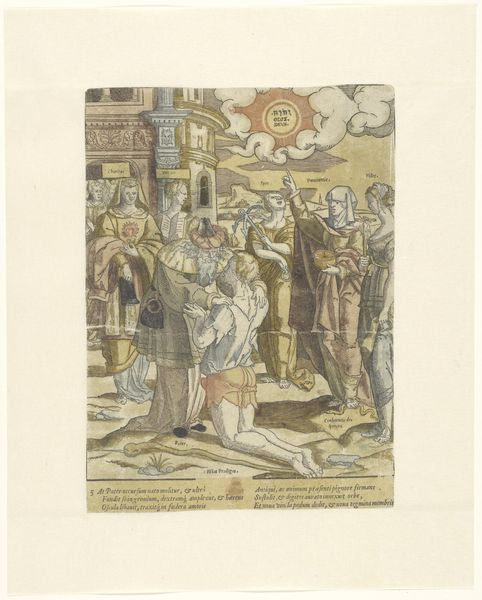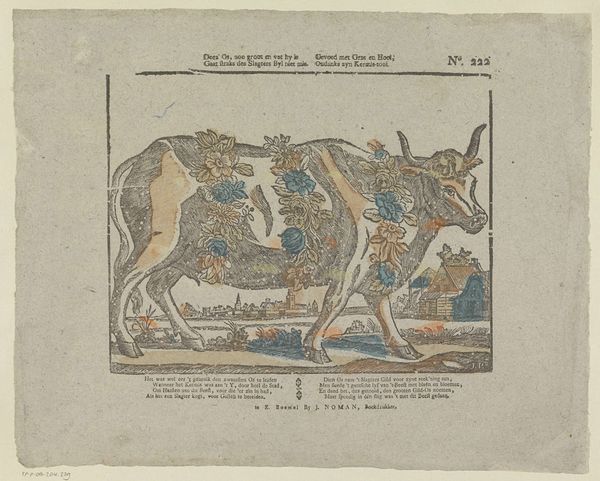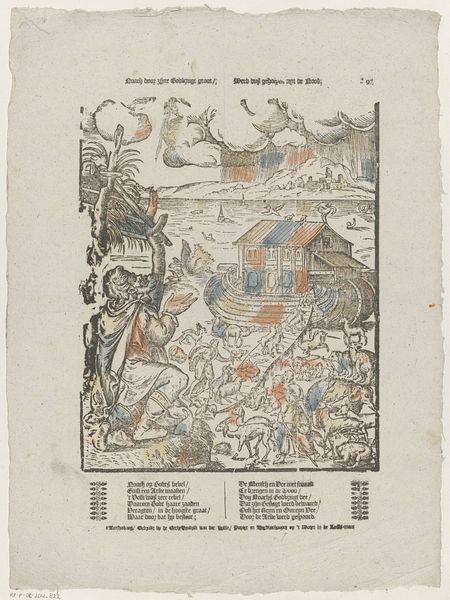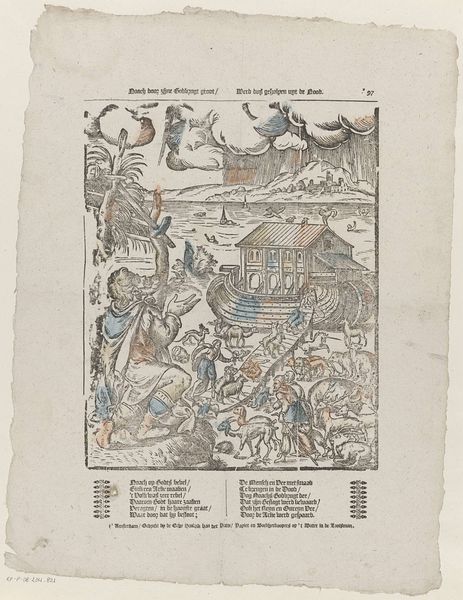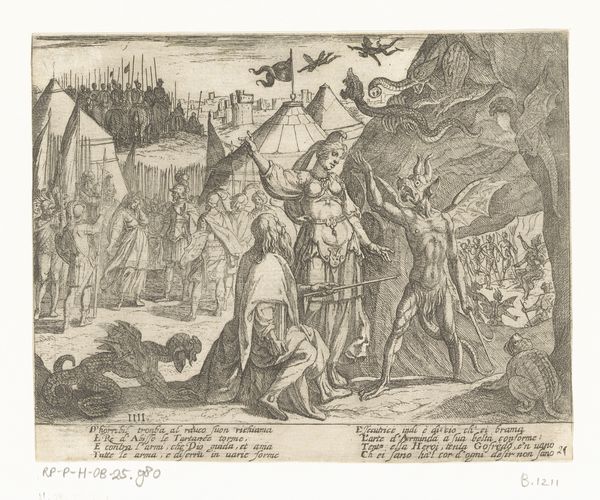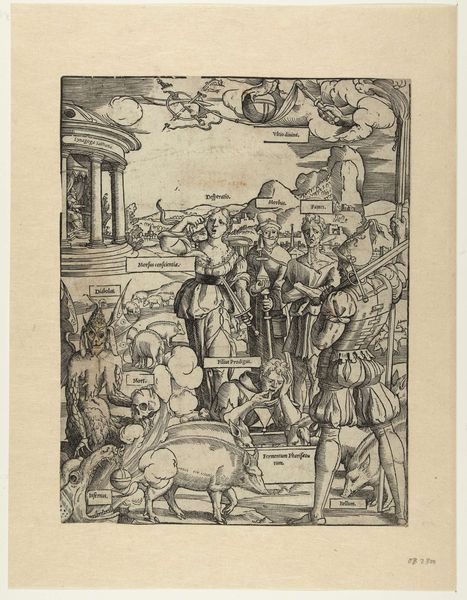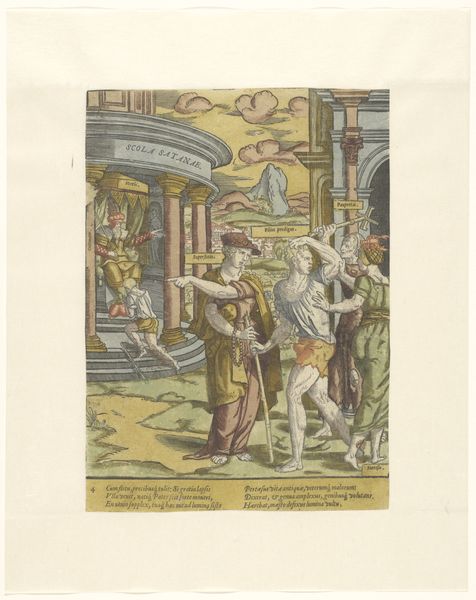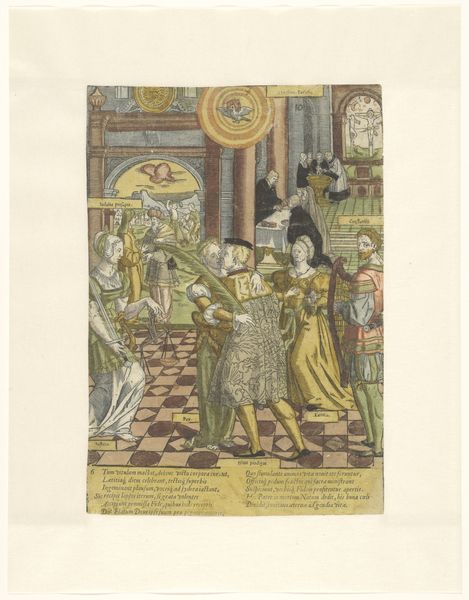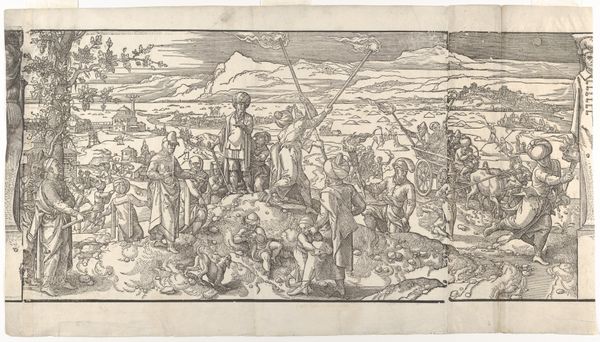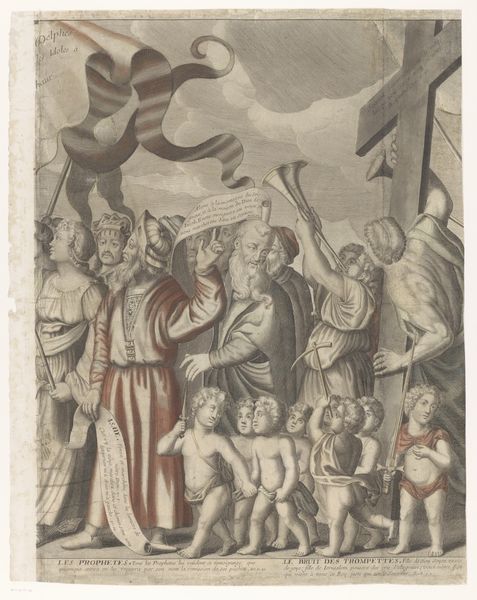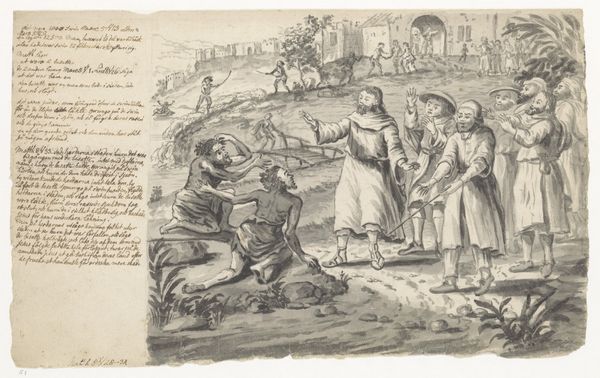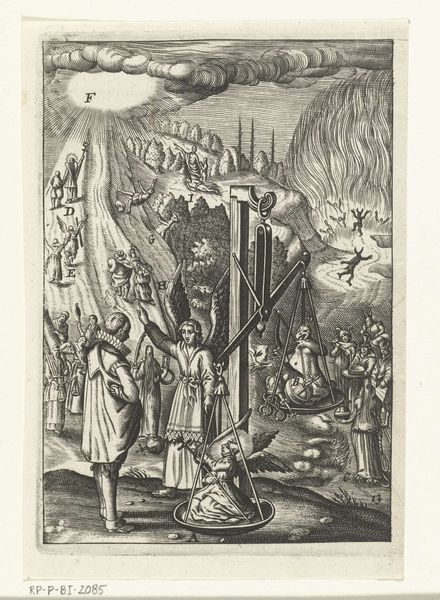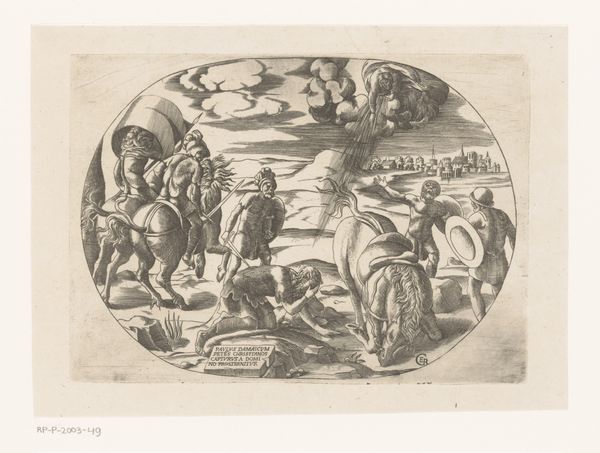
print, engraving
# print
#
figuration
#
history-painting
#
northern-renaissance
#
engraving
Dimensions: height 270 mm, width 211 mm
Copyright: Rijks Museum: Open Domain
Editor: Here we have Cornelis Anthonisz.’s engraving, "The Prodigal Son Eats with the Swine," from around 1540 to 1550. The color feels very intentional, and the composition is peculiar; there is an almost comic-book feel, or even theatre. What's your take on this piece? Curator: I see it as deeply embedded in its historical context. Anthonisz. was working during a time of significant religious and social upheaval. The Protestant Reformation was challenging traditional Catholic doctrines, impacting social norms across Europe. Do you see how this narrative plays out here? Editor: I think so, the religious imagery contrasts starkly with the vulgar image of a man eating alongside pigs. There's a breakdown of moral order and clear reference to biblical teachings of sin and redemption. It feels like more than just a depiction of a parable; it's a social commentary? Curator: Precisely! The printing press made images like these widely accessible, and this would be particularly powerful. Notice how it reflects on societal concerns, especially wealth and poverty, sin and redemption. What does the choice of printmaking, specifically engraving, as a medium suggest about the intended audience and message? Editor: I'd imagine that would be important, because it suggests mass production. I see that now, a call to awareness perhaps aimed towards a large section of society, meant to make them aware. I didn’t think about the medium in those terms initially. Curator: Reflecting on the role of art in the public sphere – it is not just decoration; it is social and political commentary. Art creates discussions of power, economics and behavior. Editor: I am now seeing many more complex details about the printing method and composition in relation to its social context! I think I can analyze imagery much better with the cultural moment in mind.
Comments
No comments
Be the first to comment and join the conversation on the ultimate creative platform.
